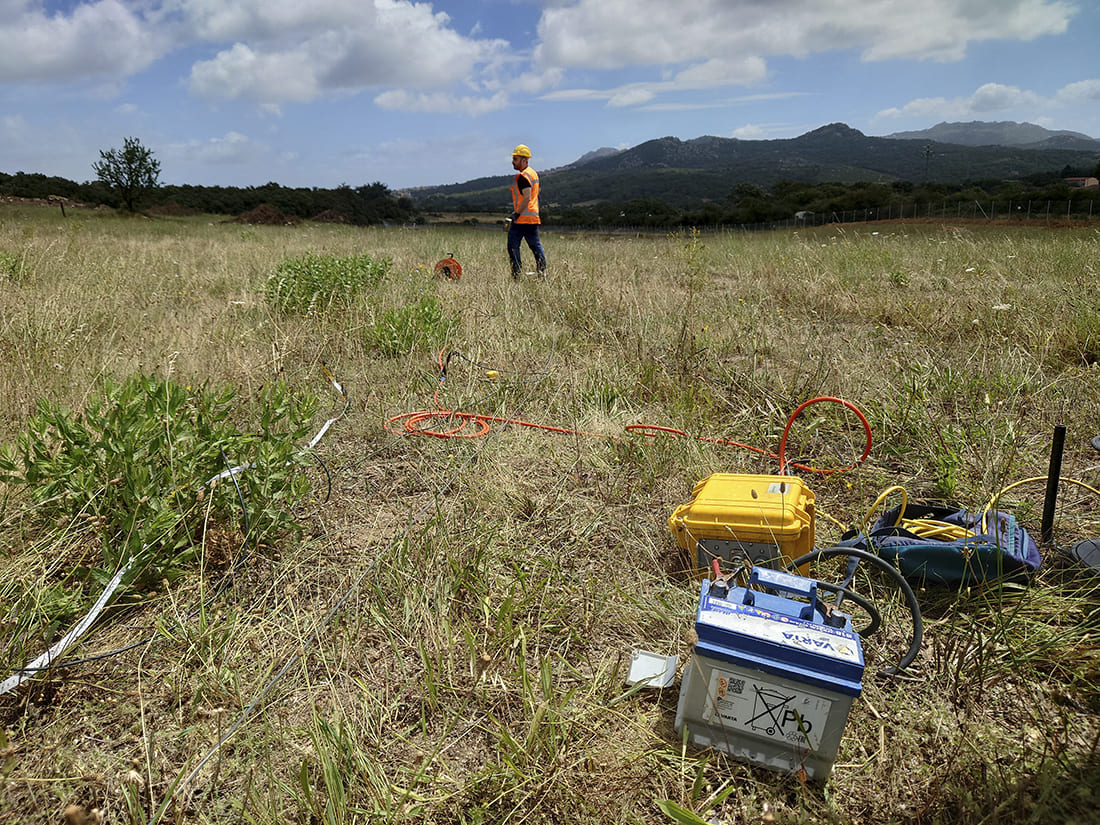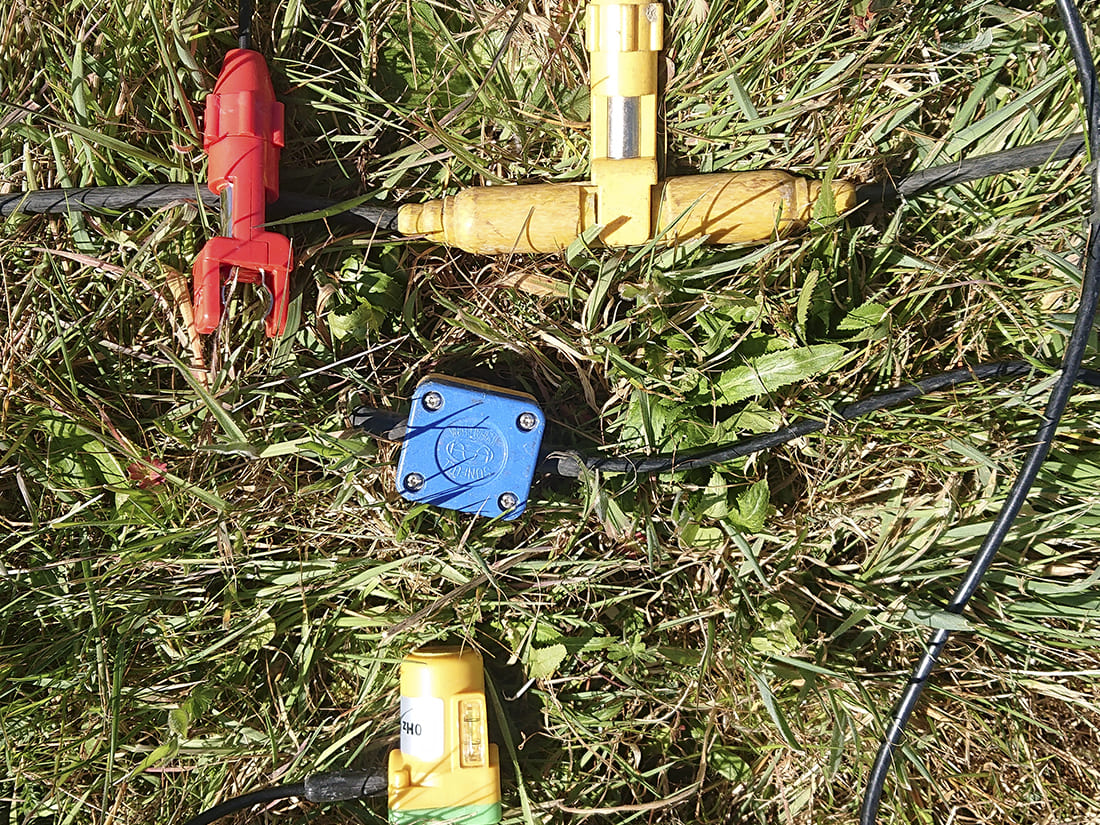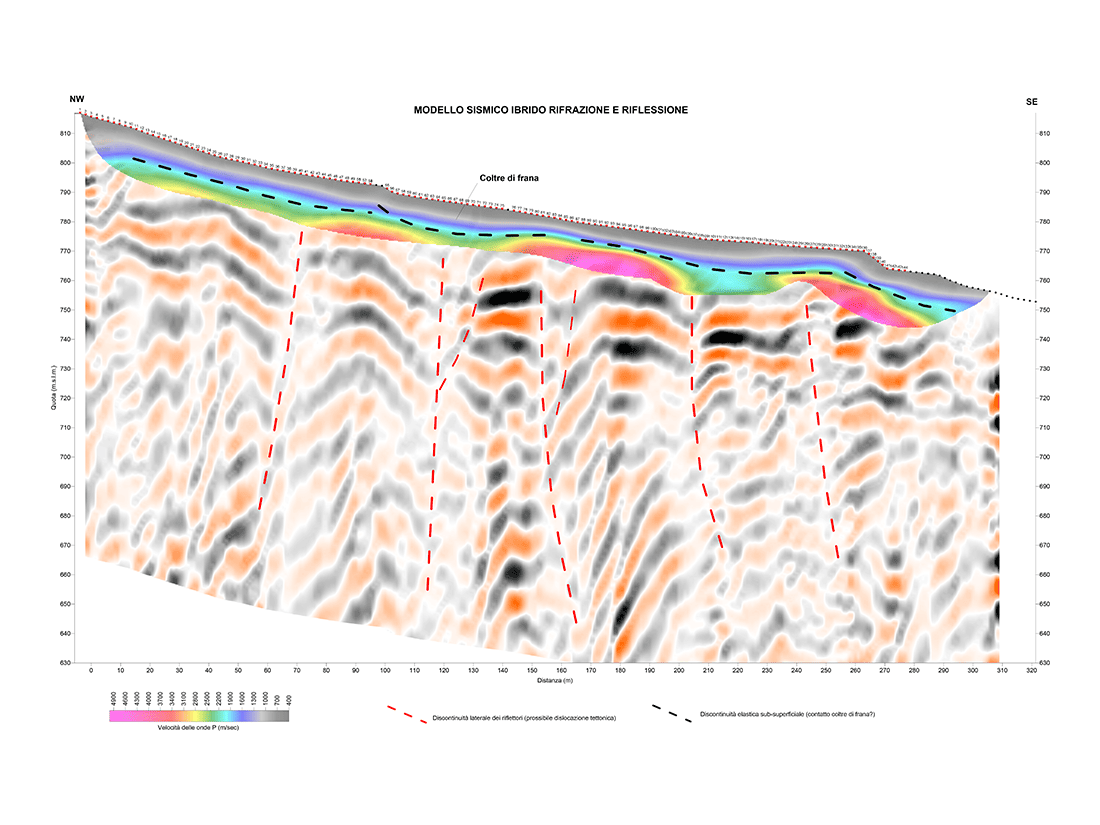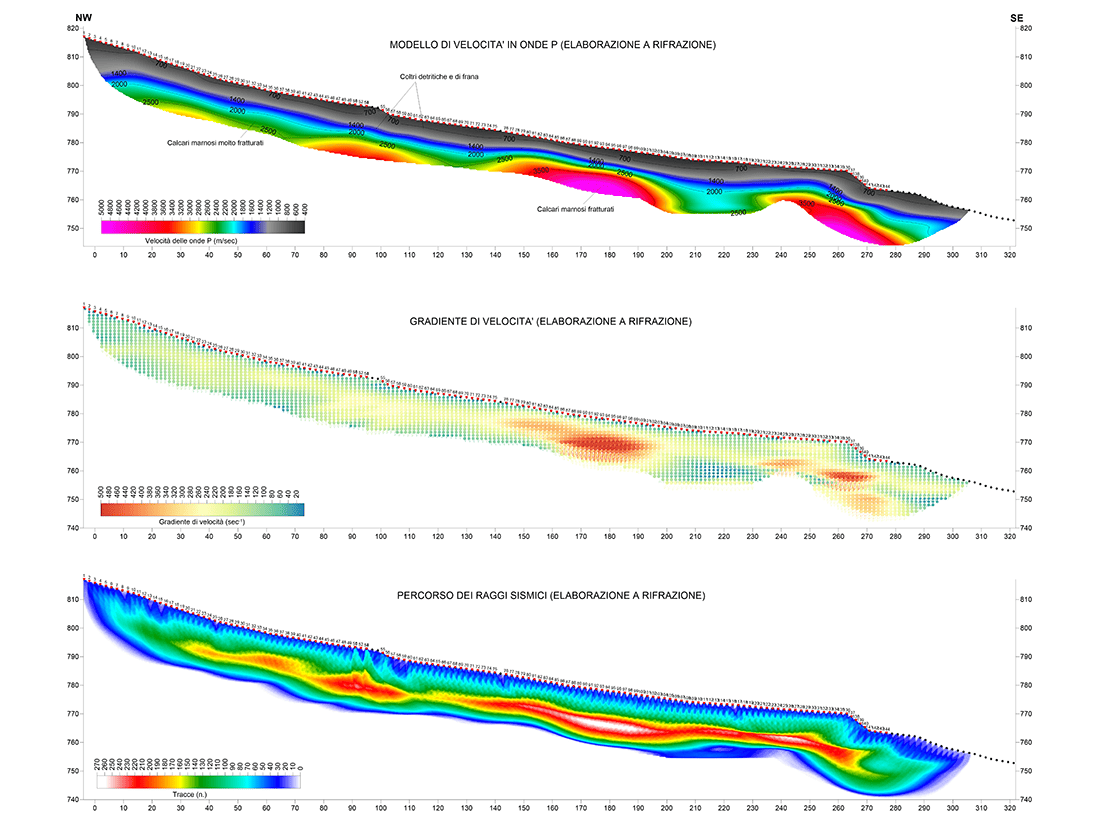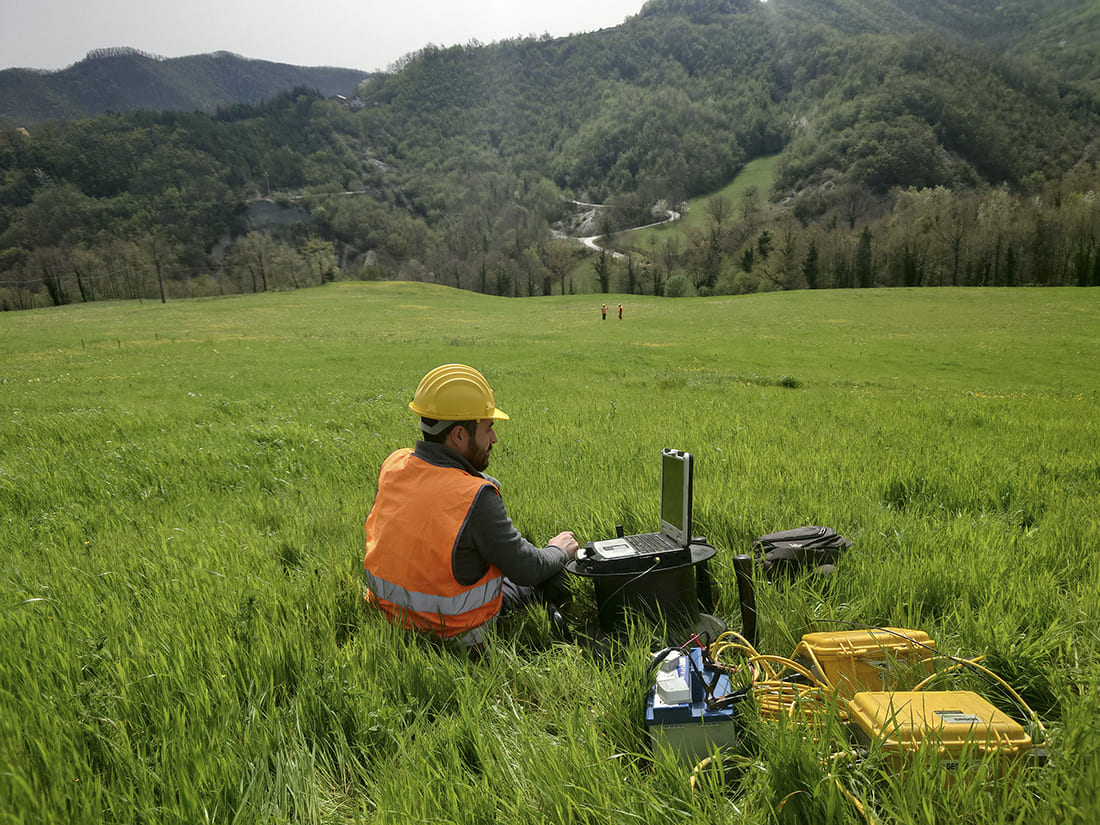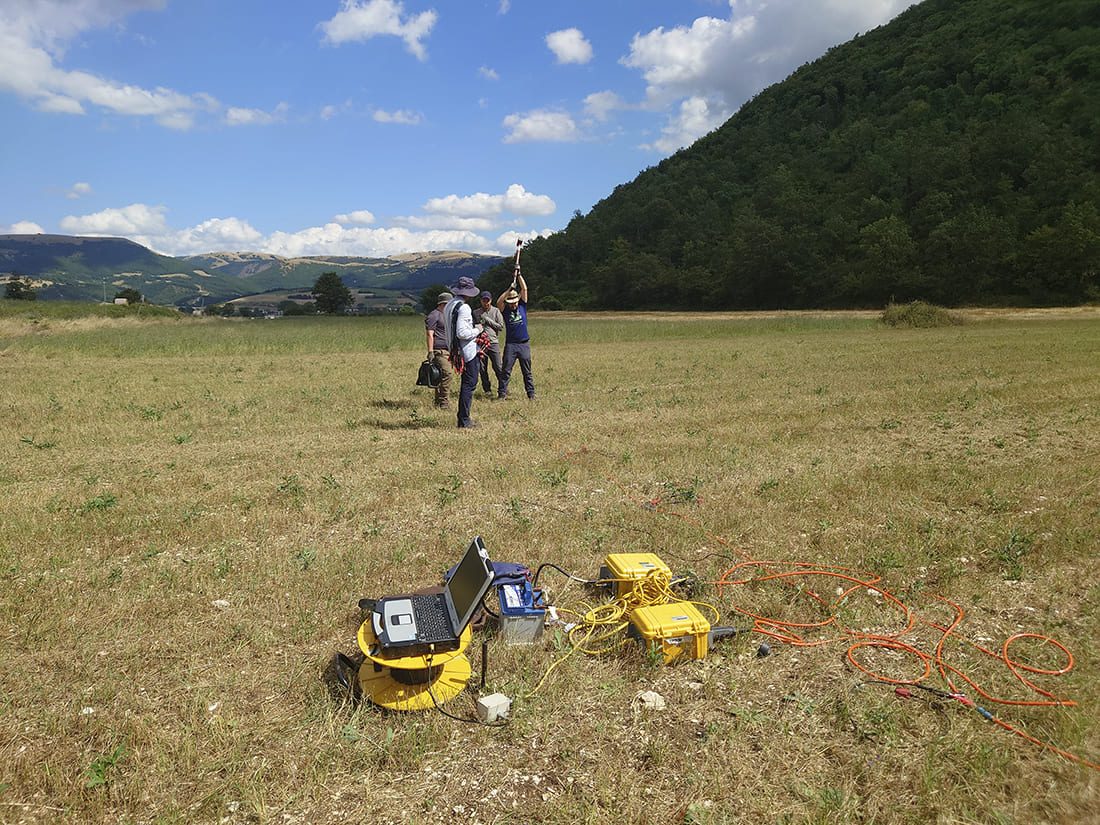Seismic investigations
Reconstruction of the subsoil structure through the analysis of seismic wave propagation
The seismic methods are based on the analysis of recordings of natural elastic disturbances (passive seismic) or specifically generated ones (active seismic strong>).
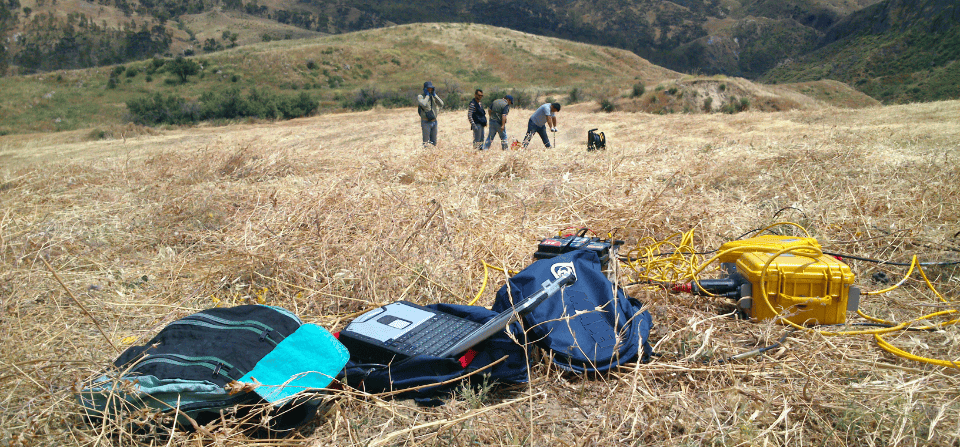
The developed models allow us to reconstruct the speeds with which the seismic waves propagate underground and to identify the surfaces of elastic discontinuity from which it will be possible to trace the reconstruction of the geological structures , define the geometries of landslide bodies, estimate the state of fracture of rock masses, the state of conservation of stone materials and more.
For the definition of the seismic models, in relation to the context to be investigated, we make use of the following methods:
- Classical and tomographic surface refraction seismic.
- Borehole seismic (Down-Hole, Cross-Hole, Seismic Tomography).
- Integrated surface and borehole seismic modeling.
- High and very high definition seismic reflection.
- Hybrid seismic refraction/reflection.
- Reconstructions of vertical profiles (Vs30) and two-dimensional sections of the speeds of S waves, through analysis of the dispersion of the phase speeds of active and passive Rayleigh waves (Multichannel Analysis of Surface Waves – MASW).
- Microseismic and sonic measurements for the study of artefacts.
- Vibration monitoring.
- Analysis of site seismic behavior using seismological measurements and analytical modeling on broadband sensor arrays. (HVSR Analysis; MSPAC; fk-Analysis; Transfer Functions).
Do you have a project?
Contact us for a consultation or for more information on our services
Contact us now